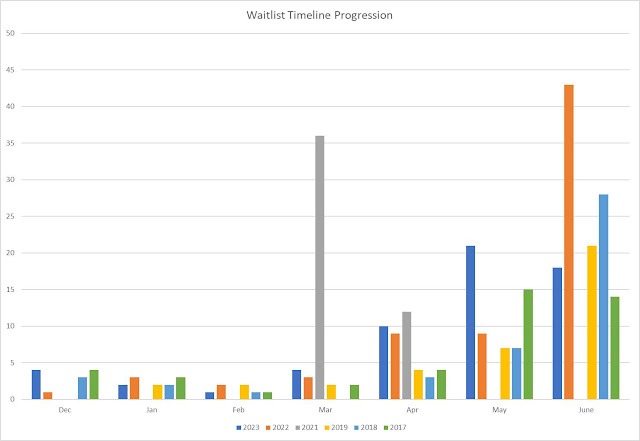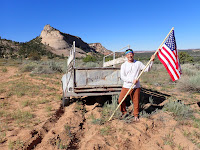Series Background
This is the final episode in my series highlighting those everyday athletes who are working smarter, not harder to accomplish their endurance goals. Vespa has been proven to be a game-changer for so many athletes like you and me that it's hard to refute the underlying benefits.If you're serious about bringing balance to your endurance nutrition then why not give Vespa a shot? No GI distress. Faster recovery. Continuous mental clarity. These are all amazing benefits from leveraging your body's largest natural resource as fuel...FAT!
Please use my code (RunRovertRun15) if you're interested in trying out Vespa products!
A Few Words About Lance
Lance started showing up at our group runs a couple years ago and was immediately enthralled by the fact that there are people out there who are not satisfied with running half-marathons and marathons. These so-called ultra-marathoners completely blew his mind!!
He was (and still is!) a sponge for all things endurance, running and adventuring. He immediately wanted to become an ultra-marathoner and had no issue with FOMO taking control of his Ultra Signup impulses. Before we knew it, he was signed up for his first 50-miler (Ray Miller) and began training with Vespa as the cornerstone of his nutrition strategy.
Lance has been an ideal pupil when it comes to adjusting to OFM and putting Vespa to work for his endurance goals. He's conquered numerous ultra distances with the help of Vespa and continues to work towards bigger and bigger goals. Even better...Lance is now a 2025 Vespa ambassador himself and helps spread the good word about leveraging fat as fuel. Aspirations to ambassador! Awesome!
In His Own Words
Tell us a little bit about your personal and professional life
I still feel a little weird calling myself a runner, but my journey really took off in 2022 when I started training for my first half marathon at AZ48. That quickly escalated into a full marathon (Rock & Roll) and then a few 50Ks. Now, I’m chasing even crazier distances!
But running and I oddly go way back. I first laced up my shoes in 2001 after joining the Army following 9/11—though back then, I ran only because I had to. After leaving the Army in 2011, I spent nearly a decade laser-focused on my civilian career as a field engineer, avoiding fitness altogether (and easily was 350+ pounds). It wasn’t until 2020 that I truly started my fitness journey and since then there’s been no turning back.
What is your favorite running distance?
The half marathon is still my favorite distance, but with my current training, even 50 miles doesn’t seem as daunting as it once did.
What big goal(s) have you set for yourself?
Right now, my biggest goal is finishing Cocodona 250 in May 2025. After that, I have my sights set on WSER and maybe even UTMB. Once I check those off, I might finally dial back on the crazy distances…maybe 😉
How strictly do you follow OFM (Optimized Fat Metabolism) protocols in your daily life?
I’ve recently incorporated intermittent fasting into my routine and have been consistently using Vespa in all my races and most of my long runs.
Why did you start using Vespa?
My coach, Trevor Davenport, introduced me to Vespa early in my running journey. I had just completed my first 50K when I joined the San Tan Trail Running Club, and as I started working with a coach, Vespa became a key part of my training.
How do you see Vespa helping you reach your goal(s)?
Vespa has played a huge role in my running success. I’ve never truly bonked, never struggled with gut issues—something I hear about all the time—and I attribute that to having a great coach and adopting Vespa early on.
What are the top three benefits you’ve noticed while using Vespa?
- No bonking, brain fog, or gut issues – I’ve never had to deal with any of these problems, which are common in endurance racing.
- Simplicity & consistency – I set my watch to alert me every two hours, take my Vespa, and stay on top of hydration and electrolytes.
- Faster recovery – I bounce back quickly after long runs, which has been a game-changer for my training.
Any advice for others looking to adopt OFM and/or Vespa into their endurance training?
Consistency is key! Set a watch alarm to remind yourself to take Vespa regularly. Also, I highly recommend intermittent fasting—it’s incredible how different you feel when you're more fat-adapted. One of the biggest surprises for me was running long distances without ever feeling hangry!


























































